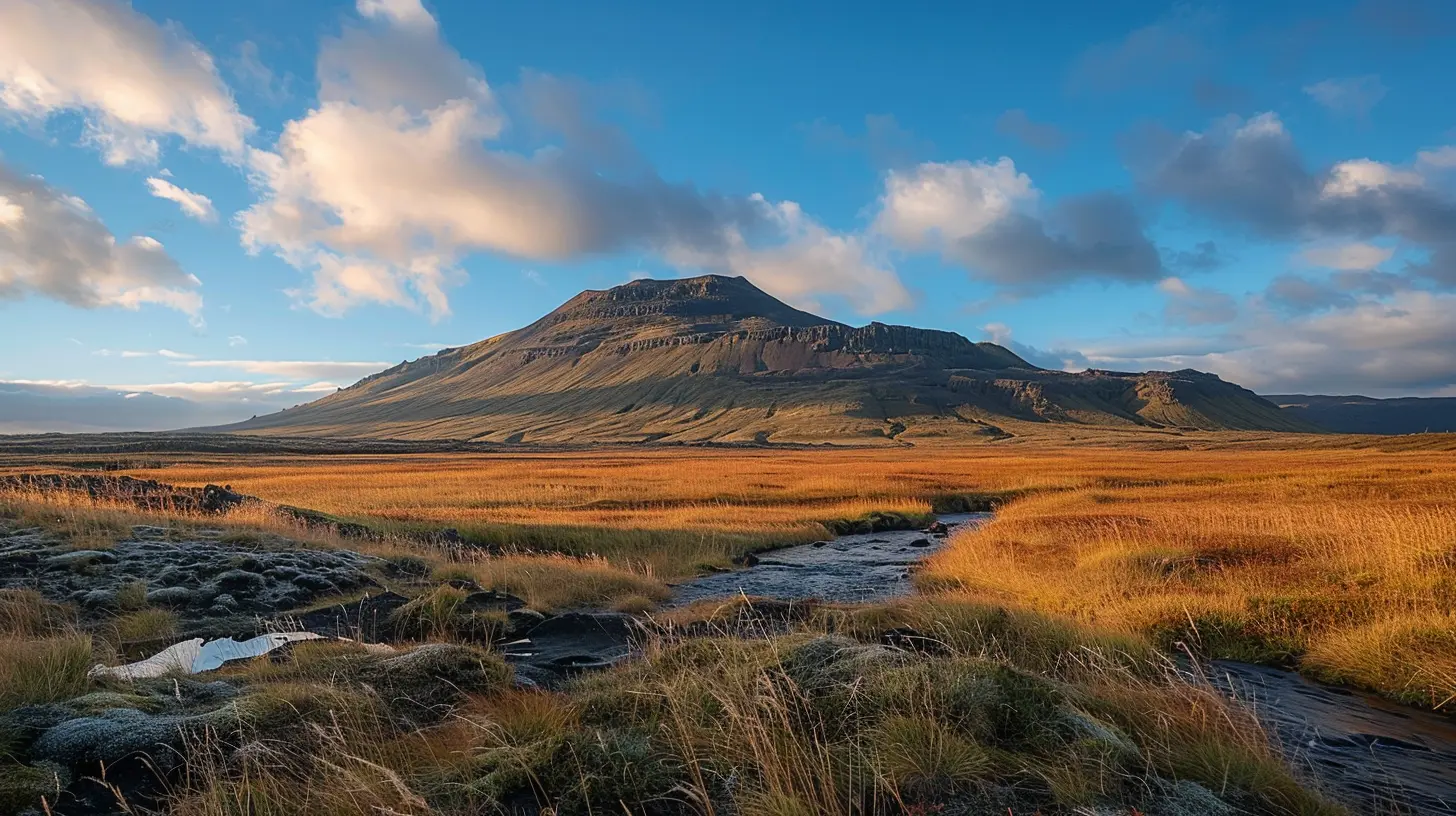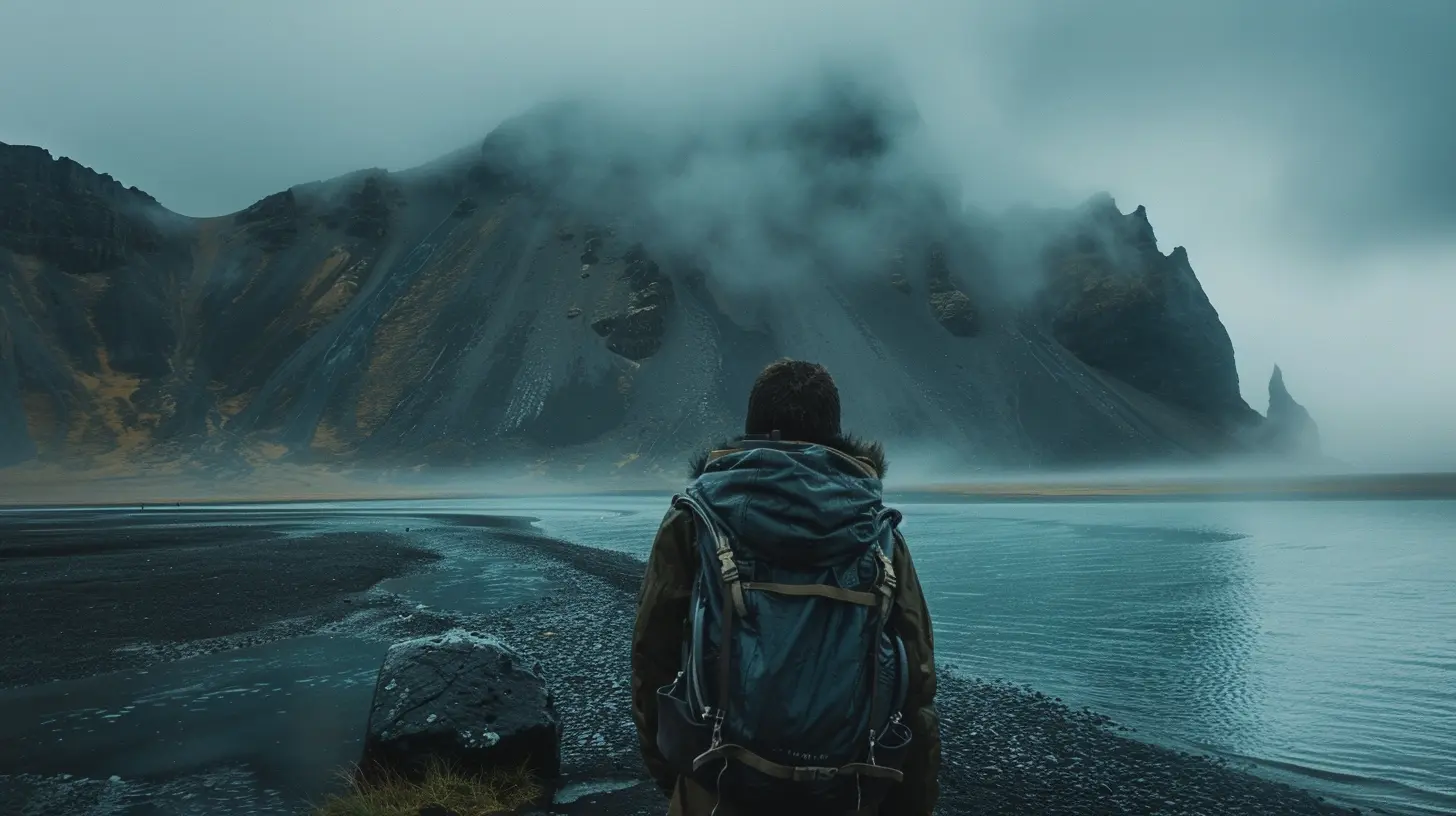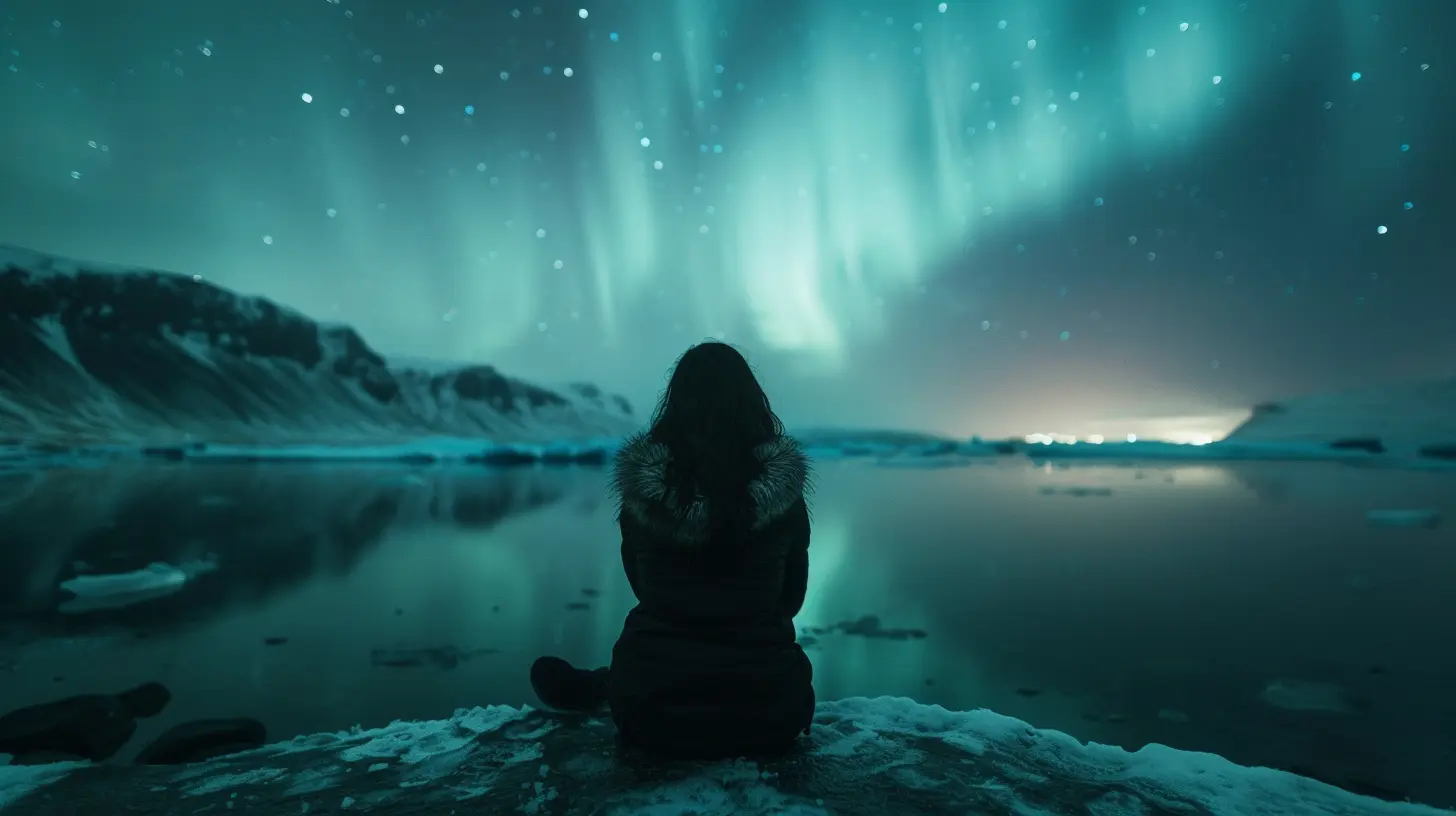Northern Lights in Iceland: A Natural Wonder Like No Other
8 February 2025
There are few spectacles on Earth that inspire as much awe and curiosity as the Northern Lights, also known as the Aurora Borealis. And if you’re dreaming of seeing this celestial show in all its colorful glory, then Iceland should be at the top of your bucket list. This magical country, with its rugged landscapes, sweeping fjords, and icy glaciers, provides the perfect backdrop for witnessing this natural phenomenon. But why Iceland? What makes this destination stand out compared to other Northern Lights hotspots? Let’s dive in and explore everything you need to know about experiencing the Northern Lights in Iceland. 
What Exactly Are the Northern Lights?
Let’s start with the basics. What are the Northern Lights, and why are they so captivating?In simple terms, the Northern Lights are bright, colorful lights that dance across the sky. The science behind them is a bit more complicated, but I’ll break it down. When charged particles from the sun collide with Earth’s atmosphere, they create a vivid light display. These particles, known as solar winds, interact with gases like oxygen and nitrogen, producing this extraordinary light show. The result? A surreal array of greens, purples, reds, and blues streaking through the night sky like someone took a paintbrush to the heavens.
They’re like nature’s fireworks, but on a whole other level.
Why is Iceland One of the Best Places to See the Northern Lights?
You may be wondering: why Iceland? Why not Norway, Sweden, or Canada, which also lie within the "Auroral Zone"?Well, Iceland has certain advantages:
1. Proximity to the Arctic Circle
Iceland is perfectly situated near the Arctic Circle, which means it’s within one of the best areas to observe the Northern Lights. The further north you go, the better your chances of seeing the Aurora Borealis, especially during the winter months when the nights are longest.2. Minimal Light Pollution
Many of Iceland’s best Northern Lights viewing spots are far from major cities and artificial lights. If you're in Reykjavik (Iceland's capital) and looking for a quick getaway to catch the lights, you’re just a short drive from complete darkness — optimal for aurora viewing. Unlike some countries, Iceland has vast areas of untouched wilderness, meaning the absence of light pollution allows the lights to shine with maximum intensity.3. Breathtaking Landscapes
Iceland’s landscapes are stunning on their own. Now, imagine those same landscapes illuminated by the Northern Lights. The contrast between the icy glaciers, snowy mountains, volcanic black beaches, and the vibrant auroras will leave you mesmerized. Staring up at the Northern Lights reflecting in a calm, icy fjord—it’s like something out of a dream.4. Accessible and Easy Travel
Iceland’s relatively small size makes it easy to pack a lot into a short trip. Unlike some other Northern Lights destinations, where you might need to travel for hours, here you can be settled in a cozy cabin in the wilderness and catching the auroras in no time. Plus, there are plenty of guided tours to take you to prime viewing spots, so you don’t need to worry about navigating tricky terrain.
Best Time To See the Northern Lights in Iceland
You’ve made up your mind. Iceland is the place to see the Northern Lights. But, when should you go?1. Winter is the Ideal Time
The Northern Lights are visible from late September to early April. Why these months? The answer is darkness! Iceland experiences long, dark nights in the winter, which is key for seeing the auroras. You simply won’t see them in summer because there’s too much daylight (thanks to the midnight sun).2. Peak Viewing Hours
Sure, you can spot the lights anytime it's dark, but typically, the best time to see the Northern Lights is between 9 PM and 2 AM. So, pack your warmest clothes, grab a hot drink, and get cozy under the stars — it could be a long but worthwhile wait!3. Weather Conditions
Clear skies are just as important as darkness. Cloud cover can easily block your view, so it’s essential to keep an eye on weather forecasts and Northern Lights prediction apps (yes, that’s a thing!). In fact, the Icelandic Met Office offers real-time Northern Lights forecasts to help you maximize your chances.4. Plan for Flexibility
The Northern Lights are unpredictable. You might see them one night and not the next, so give yourself a good week in Iceland if possible. This gives you the flexibility to move around and chase clear skies when the aurora activity spikes.
Best Places in Iceland to See the Northern Lights
So, you’re in Iceland, and now you’re eager to know the best spots to see the lights. Well, you’re in luck—there are some prime locations all across the country.1. Thingvellir National Park
Located about 45 minutes from Reykjavik, Thingvellir (Þingvellir) National Park is not just a UNESCO World Heritage Site steeped in Icelandic history. It's also an incredible place to see the Northern Lights. With its open skies and distant mountains, it’s an ideal viewing location, far from the city lights. Plus, the park itself is gorgeous, with its dramatic cliffs and crystal-clear lakes.2. Jökulsárlón Glacier Lagoon
This glacier lagoon is one of the most surreal places on Earth, and witnessing the Northern Lights reflecting off the icebergs floating in the lagoon is nothing short of magical. It’s a bit further east, but the journey is worth it. The contrast between the glowing auroras and the icy blue hues of the lagoon is something you’ll never forget.3. Reykjanes Peninsula
This area is often overlooked by tourists but is a great spot for aurora watching, especially if you’re in Reykjavik and don’t want to drive too far. The peninsula is known for its geothermal activity, rocky coastlines, and minimal light pollution. You might even see the lights over the famous Blue Lagoon if you’re lucky.4. Kirkjufell Mountain
If you’ve ever seen photos of Northern Lights in Iceland, chances are you’ve seen Kirkjufell Mountain, located on the Snæfellsnes Peninsula. Its distinct cone shape makes it a photographer’s dream, and when framed by the Northern Lights, it’s simply breathtaking.How to Maximize Your Chances of Seeing the Northern Lights
As I mentioned, the auroras are elusive, and even the best conditions don’t guarantee a sighting. But don’t be discouraged! Follow these tips to improve your odds:1. Check the Aurora Forecast
Before heading out, always check the aurora forecast. Iceland’s weather can change on a dime, so you’ll want to monitor cloud cover and solar activity. Apps like My Aurora Forecast or websites like the Icelandic Met Office’s Northern Lights forecast page are essential tools.2. Avoid the Full Moon
The moon can be bright enough to drown out the Northern Lights. If you have the flexibility, try planning your trip around a new moon for maximum darkness.3. Stay Out Late
Chances of seeing the Northern Lights increase the later you’re out. Typically, the best time to spot them is between 10 PM and 2 AM. So, stay patient and don’t give up too early.4. Join a Guided Tour
If you’re not familiar with Iceland’s remote areas, or you simply want to boost your chances, a guided Northern Lights tour is a great option. With guides who know the area well and follow live forecasts, they improve your chances of seeing the auroras significantly.What to Wear While Chasing the Northern Lights
Iceland in winter is no joke – it’s cold, snowy, and windy. If you’re going to be outside for hours waiting for the Northern Lights to appear, you need to dress warmly. Here’s a quick checklist:- Thermal base layers: Start with a good, moisture-wicking base layer to keep you dry and warm.
- Insulated jacket: A thick, down-filled jacket will be your best friend.
- Waterproof pants: Snow can be deep, and you don’t want to get wet while hiking to your viewing spot.
- Boots: Insulated, waterproof boots with good traction are a must.
- Accessories: Don’t forget a hat, gloves, and a scarf to protect yourself from the cold Arctic winds.
Conclusion
The Northern Lights in Iceland are truly a natural wonder like no other. Whether you're chasing them across the rugged landscapes of Thingvellir National Park or watching them shimmer over Jökulsárlón Glacier Lagoon, it's an experience you'll never forget. While they can be elusive, with a little planning, patience, and luck on your side, you’ll stand a great chance of witnessing this magical light show in one of the world’s most incredible settings.So, pack your bags, grab your camera, and get ready for a spectacular adventure under Iceland's magnificent night sky.
all images in this post were generated using AI tools
Category:
Must See LandmarksAuthor:

Tracie McAdams
Discussion
rate this article
10 comments
Corinne Blevins
Absolutely breathtaking! Can't wait to see them!
April 3, 2025 at 3:57 AM

Tracie McAdams
Thank you! I'm excited for you to experience the magic of the northern lights!
Rachel Lambert
Absolutely breathtaking! Witnessing the Northern Lights in Iceland is a once-in-a-lifetime experience that connects you with nature's magic. Embrace the beauty and let the wonder inspire your adventures!
February 24, 2025 at 3:43 PM

Tracie McAdams
Thank you! I'm thrilled you enjoyed the article and share the awe of the Northern Lights. It truly is a magical experience!
Solaria McQuillan
Oh sure, because who doesn't love freezing their toes off for some pretty lights?
February 21, 2025 at 3:43 PM

Tracie McAdams
I get that! The experience is certainly worth braving the cold for the breathtaking views.
Poppy McLain
Discovering the Northern Lights in Iceland is a breathtaking experience that ignites the spirit and captivates the heart. Each shimmering hue in the night sky serves as a reminder of nature's beauty and magic. Embrace the adventure and let the wonder of this natural phenomenon inspire your journey!
February 18, 2025 at 3:27 PM

Tracie McAdams
Thank you! The Northern Lights truly are a magical experience that highlights the incredible beauty of nature in Iceland. I'm glad you feel the same spirit of adventure!
Astraea Webster
Experience Iceland’s breathtaking Northern Lights for yourself!
February 18, 2025 at 3:28 AM

Tracie McAdams
Absolutely! Witnessing the Northern Lights in Iceland is an unforgettable experience—nature's own light show!
Tilly Velez
The Northern Lights in Iceland offer a breathtaking spectacle that transcends mere beauty. Understanding their scientific origins enhances the experience, while the stark, untouched landscapes provide an extraordinary backdrop, making each viewing a profound connection to nature.
February 17, 2025 at 5:52 PM

Tracie McAdams
Thank you for your insightful comment! I completely agree that the Northern Lights, coupled with Iceland's stunning landscapes, create a truly unique and profound experience.
Harper McTavish
Experiencing the Northern Lights in Iceland is a breathtaking adventure that should be on everyone's bucket list!
February 17, 2025 at 3:37 AM

Tracie McAdams
Absolutely! The Northern Lights in Iceland truly offer an unforgettable experience that captivates all who witness them.
Blade McCullough
Iceland's Northern Lights truly are breathtaking and unforgettable!
February 15, 2025 at 6:05 AM

Tracie McAdams
Thank you! The Northern Lights in Iceland are indeed a mesmerizing spectacle that leaves a lasting impression on all who witness them.
Zephyra McDonald
Forget Netflix—chasing the Northern Lights in Iceland is the ultimate binge-worthy experience! With colors dancing across the sky, you'll be wondering if nature's been taking lessons from a rave DJ. Pack your parka and prepare for a show that beats any streaming service hands down!
February 12, 2025 at 4:18 AM

Tracie McAdams
Absolutely! The Northern Lights offer a breathtaking spectacle that's truly unmatched. Nature's own light show is a must-see experience! 🌌✨
Fenn Clayton
Absolutely stunning! Witnessing the Northern Lights in Iceland is a bucket-list experience! 🌌✨
February 10, 2025 at 5:54 PM

Tracie McAdams
Thank you! The Northern Lights truly are a magical experience that everyone should see at least once! 🌌✨
MORE POSTS

Celebrating Heritage: The Must-See Festivals Around the World

Recharge Your Soul in These Tranquil Wilderness Spots

Creative Itineraries for Family Vacations in Remote Locations

From Mountains to Coastlines: Stunning Campsites for Nature Lovers

The Power of Traditional Music in Festival Celebrations

Mexico City’s Must-Visit Historical Sites

The World’s Most Scenic Caverns for a Peaceful Underground Experience